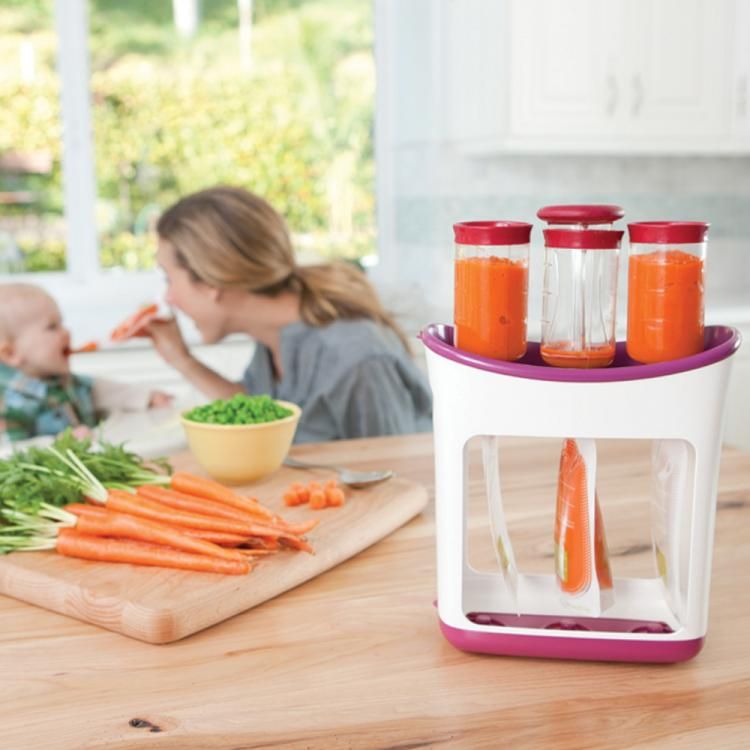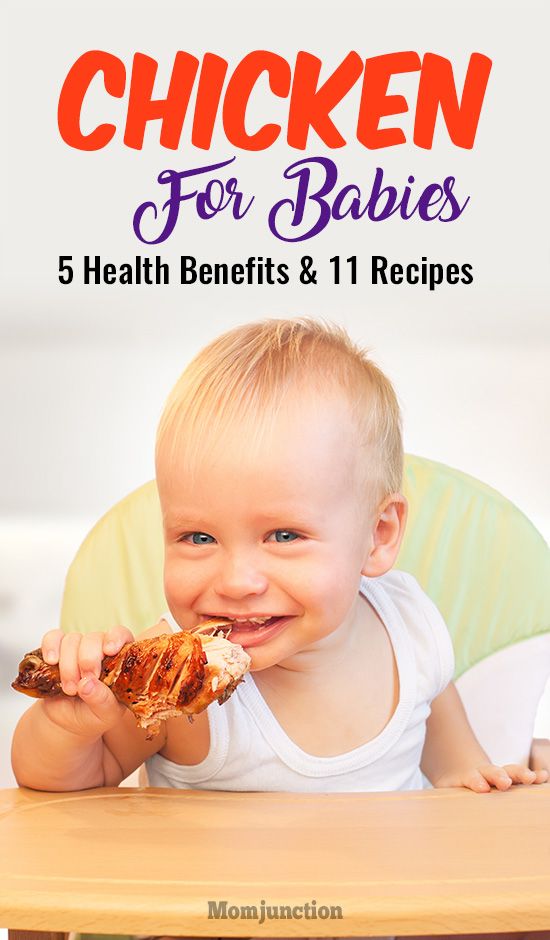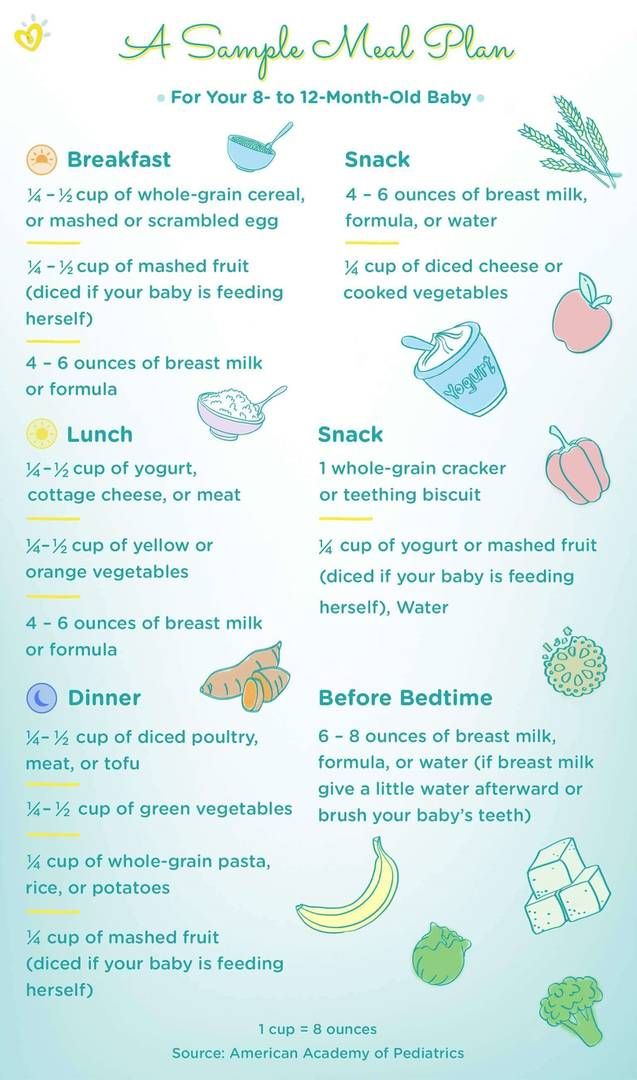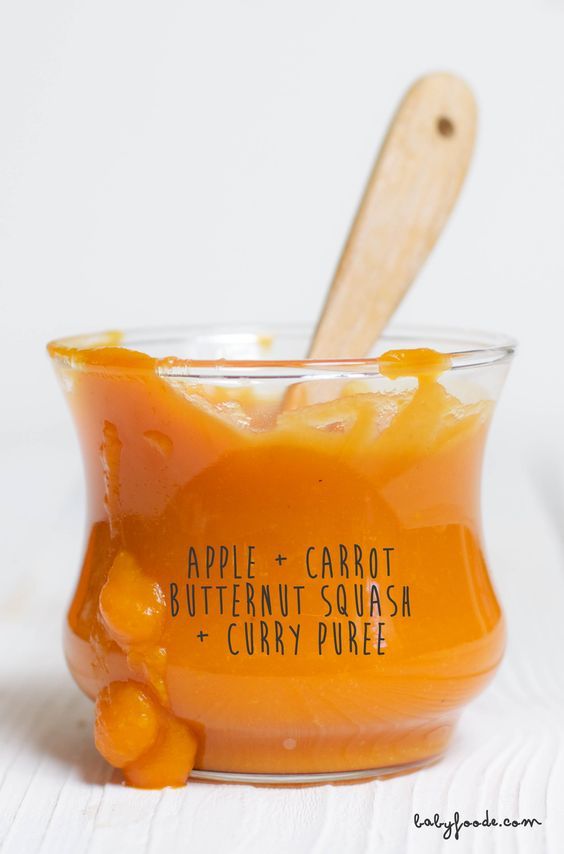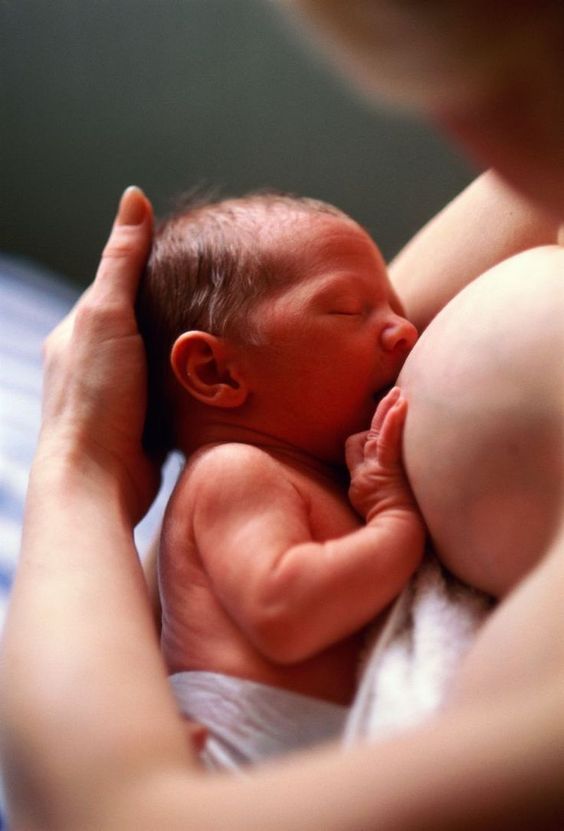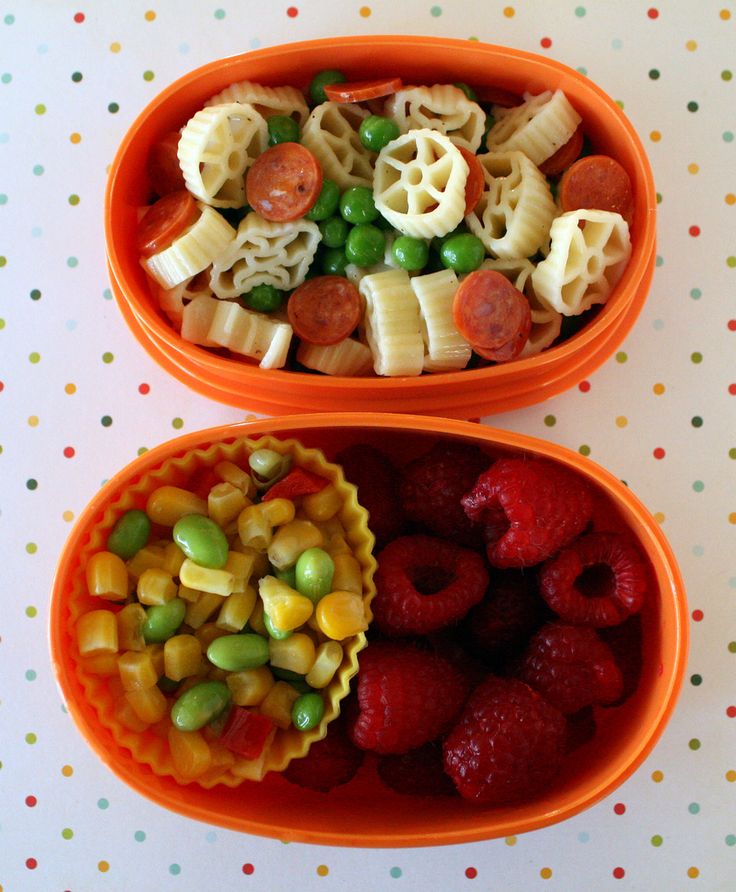Homemade baby food malaysia
8 Homemade Baby Foods You Get In Malaysia May-2022
In most cases, a lot of babies will normally be ready to start eating solid foods aside from breastfeeding or formula-feeding by the ages of 4 to 6 months.
(Image credits to FoodNavigator-USA)
During this time they will begin to develop the coordination inside their mouths to move solid food from the front to the back for swallowing. They will also stop using their tongue to push food out of their mouth.
What are the signs that they are ready?
Every child grows differently so there isn't any specific age or time where they are prepared to take solid foods. However, you can always look for these physical signs:
(Image credits to Beaba)
Is your child big enough? Most infants, in general, are ready for solid foods if they weigh around 13 pounds or more, which is double their birth weight.
Can your child hold their heads up? Your baby should be able to sit in a high chair, a feeding seat, or an infant seat with good head control.
Do they open their mouths when food comes their way? If your baby starts reaching for your food or is excited to be fed when they watch you eat, it is a sign that they are ready for solid foods.
Can they transfer food from a spoon into their throat? Check if the food is dribbling down your child’s chin while they are eating. It may be a sign that they still cannot move it to the back of their mouths for swallowing. In this case, wait for a week or two and try again.
What should you take into consideration?Not all foods are good for infants. For example, cow’s milk can increase the risk of iron deficiency and does not meet a baby’s nutritional needs. On the other hand, honey might contain spores that can cause a serious sickness known as infant botulism.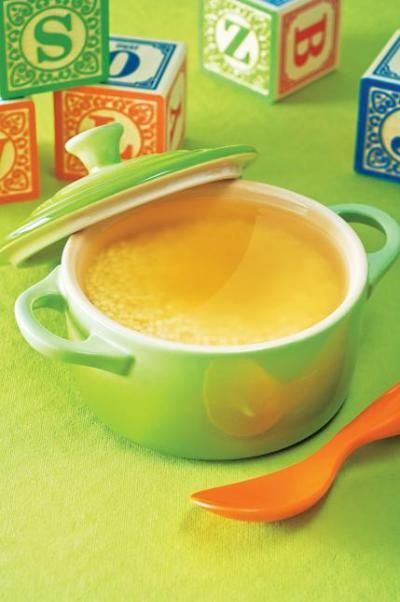 Never offer these two foods to your child before the age of 1.
Never offer these two foods to your child before the age of 1.
(Image credits to Medical Daily)
Aside from that, avoid giving your infant foods that can cause them to choke easily. While your baby may be ready for solid foods, they still need some time to get used to it. Do not offer them foods like sausages, chunks of meat or cheese, grapes, raw vegetables, or fruit chunks, unless they're cut up into small pieces. Besides that, do not offer hardened foods such as seeds, nuts, popcorn and hard candies that take some time to be chewed.
It is recommended that you give your baby potentially allergenic foods when you introduce other complimentary meals. Until now, no evidence showed that delaying the introduction of these foods can help prevent food allergies. However, it is a good period to determine if your child is allergic to any food instead of finding it out later when they are older.
Potentially allergenic foods include:
- Peanuts and tree nuts
- Eggs
- Cow milk products
- Wheat
- Crustacean shellfish
- Fish
- Soy
#1 Squeeze Me Baby
This brand was started by Ann Yeap for her son who suffers from digestive problems and various food allergies since he was young.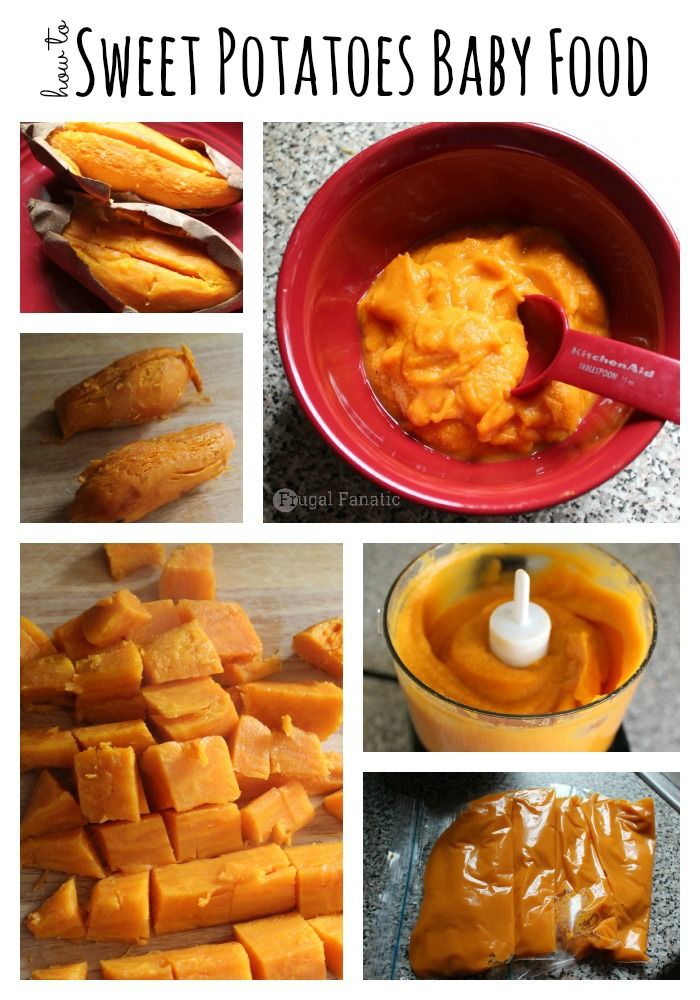 Their meals are packed into BPA-free squeeze packs and the ingredients are freshly made daily for the baby. Their best menus include sweet purees made of fruits like apple, pumpkin, pear and sweet potato which are recommended for babies 6 months onwards.
Their meals are packed into BPA-free squeeze packs and the ingredients are freshly made daily for the baby. Their best menus include sweet purees made of fruits like apple, pumpkin, pear and sweet potato which are recommended for babies 6 months onwards.
(Image credits to Squeeze Me Baby)
They also provide other menus for infants aged 8 and 12 months with prices starting from RM7.90. Their products can be found at Baby Grocer sections in Eco Cheras Mall and Central I-City aside from a delivery option for online orders.
Check out their Facebook and Instagram account.
#2 Tic Tac Tots: Superfoods for Supertots!Ran by two mommy entrepreneurs, Tic Tac Tots Malaysia is a brand that is all about babies and toddlers nutrition. They strongly believe that a healthy, well-balanced meal planned for babies and toddlers, sets the building blocks for happy, precocious super tots.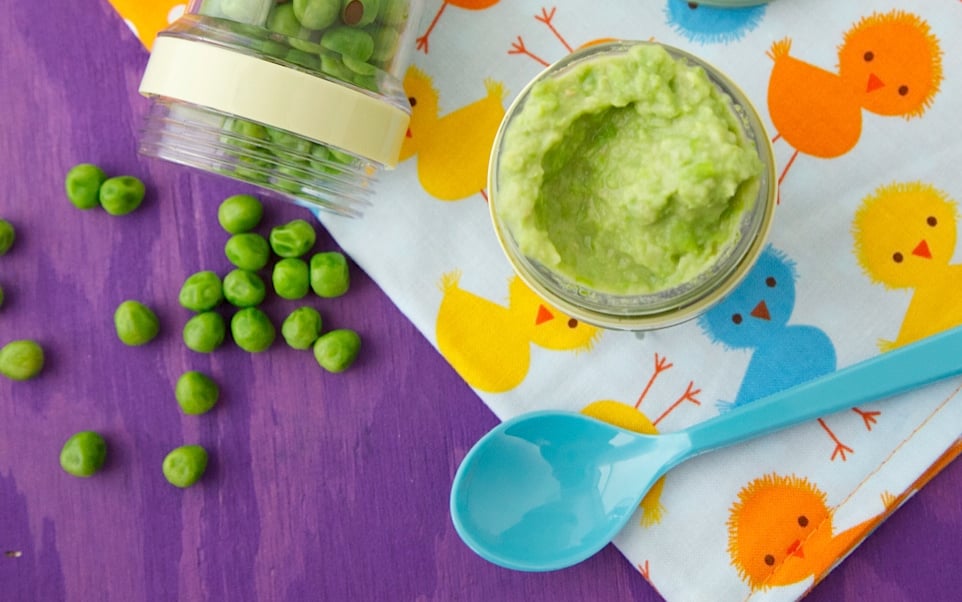
(Image credits to Tic Tac Tots: Superfoods for Supertots!)
With an offer for delivery and pickup, they provide 6 to 8 staple meals that are changed on a timely basis such as Asian Beef Stew with Rice, Hidden Vegetable Pasta with chicken nuggets and cauliflower mac & cheese, all starting prices as low as RM8.
Check out their Facebook and Instagram account.
#3 Mamahanicooks
Mahani was inspired to start Mamahanicooks during the MCO when her profession as a dancer and choreographer was affected badly due to the pandemic. She then decided to start this business not only to generate some income but more importantly, to help other mums feed their kids with nutritious meals during these troubling times.
(Image credits to Mamahanicooks)
Their best menu includes a random mix of Asian-inspired dishes such as Teppanyaki Chicken Meatballs, Spaghettini Carbonara and Slow-cooked Chicken Soup with Garlic Fried Rice priced at RM12 per set. They also offer delivery services every Tuesday and Friday afternoon.
They also offer delivery services every Tuesday and Friday afternoon.
Check out their Instagram account.
#4 Hello My Little Chef
Founder Azwa’s goal is to give the best to her little ones by creating healthy and high-quality food. Their menu consists of a variety of Halal frozen finger foods, frozen dishes and rice bowls which are suitable for babies aged 8 months and 10 months onwards.
(Image credits to Hello My Little Chef)
These food include Veggie Tots at RM15, Baked Macaroni and Chicken Lasagna both priced at RM10 and a lot more healthy goodness that is available through their delivery services and self-pickup option.
Check out their Instagram account.
#5 Baby AmbrosiaBaby Ambrosia is a brand that is committed to being an eco-friendly company and having minimal impact on the environment, and at the same time, producing the best yummy food for babies.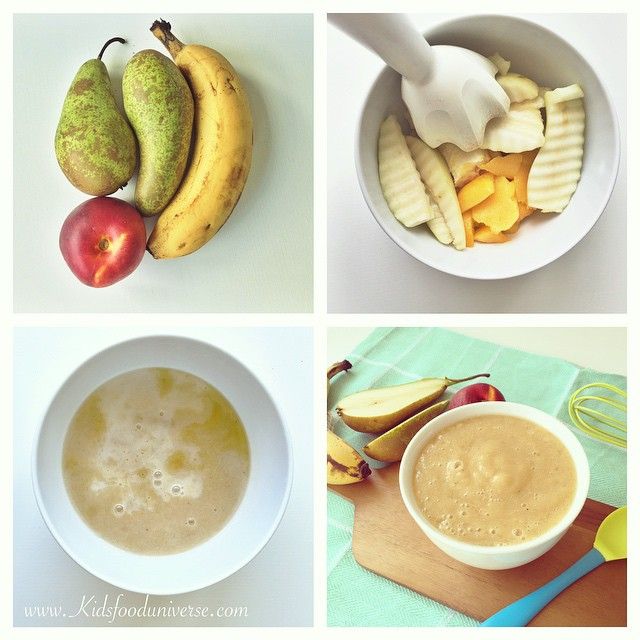
(Image credits to Baby Ambrosia)
Both their pots and packaging are recyclable and they also use fresh ingredients through most local sources. They offer delivery services with minimal charging fees and their menu price starts from RM7.90 for their Simply First Weaning Purees dedicated to infants aged 4 to 6 months.
Check out their Facebook and Instagram account.
Mahfudzah Mustafha started the company about a year and a half ago after she finished her Masters in entrepreneurship at UKM. Naming the business after her baby son, she then decided to pursue the profession seriously and actively.
(Image credits to Fawwaz Little Kitchen)
The brand’s menu consists of 22 items of food and fruit powders, freeze-dried fruits and vegetable-flavoured dry macaroni that are free of any preservatives, added sugar, salt and artificial colouring.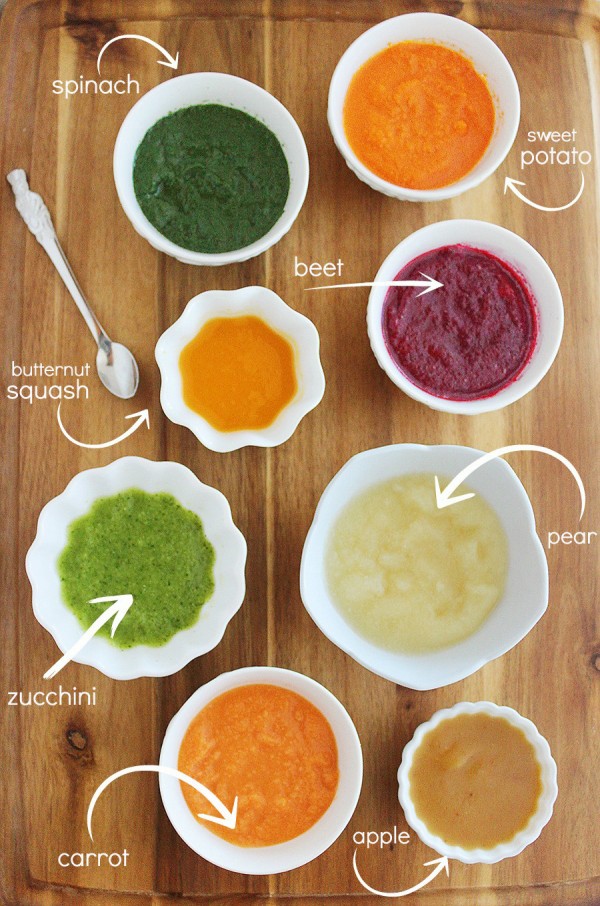 The food is also specifically prepared for babies 6 months onwards and can be obtained through their delivery service that is done every Monday, Wednesday and Friday.
The food is also specifically prepared for babies 6 months onwards and can be obtained through their delivery service that is done every Monday, Wednesday and Friday.
Check out their Instagram and Facebook account.
#7 Baby Eats By JustlixaBaby Eats by Justlixa provides a range of home-cooked baby and toddler food that are prepared from scratch using safe and Halal ingredients. Their food is also made fully of wholesome natural flavours and does not contain any added salt, sugar, additives or preservatives.
(Image credits to Baby Eats by Justlixa)
With choices for babies from 6 months to 5-year-old toddlers, their foods can be quickly prepared through simple reheating on the stove or in the microwave. They also provide delivery services every day depending on availability for parents and babies’ convenience.
Check out their Instagram and Facebook account.
Monitored by dedicated mommies, Hygge Babies is a brand that prioritizes the importance of nutrition for children at an early age. Each of their meals is carefully designed to pack a sufficient amount of nutrition paired with delicious flavours.
(Image credits to Hy)
By mixing various healthy ingredients, their meals are also free from any preservatives, additives or enhancers and are 100% vegan made. Their food is available in easy-to-open jars and they offer delivery services every Tuesday and Saturday.
Check out their Instagram and Facebook account.
As your baby has begun to slowly get used to eating solid foods, continue to offer them a wide variety of fruits, vegetables, grains, and protein-rich foods. You can also start to gradually introduce more textures and soft finger foods once their eating has improved. Serving your baby what the rest of the family is eating is not a problem, but always watch out for added sugars that are not recommended for children under the age of 2. For precautions, always check the Nutrition Facts label on packaged foods that you buy and try to steer clear of foods that list 1 gram or more of added sugars.
For precautions, always check the Nutrition Facts label on packaged foods that you buy and try to steer clear of foods that list 1 gram or more of added sugars.
Want to read more? Check out these 7 worst foods for your children's teeth and how you can make potty training your kids easier.
Frequently Asked Questions
PRODUCTS
When can my child start consuming SquEEEze Me Baby?
Infants aged 6 months and above can start consuming SquEEEze Me Baby, as long as they have started on solids. We would recommend parents to adhere to our plan - begin with 6+ months menu, then to slowly work their way up to 8+ months and 12+ months.
What are the differences?
6+ Months - purees made with just one fruit or vegetable to make sure that babies do not have an allergic reaction to the ingredient (based on 4-day-rule).
8+ Months- combination of two ingredients for optimum nutrition and great flavour profile. Each 8+ Months flavours include the 6+ Months puree with another new ingredient.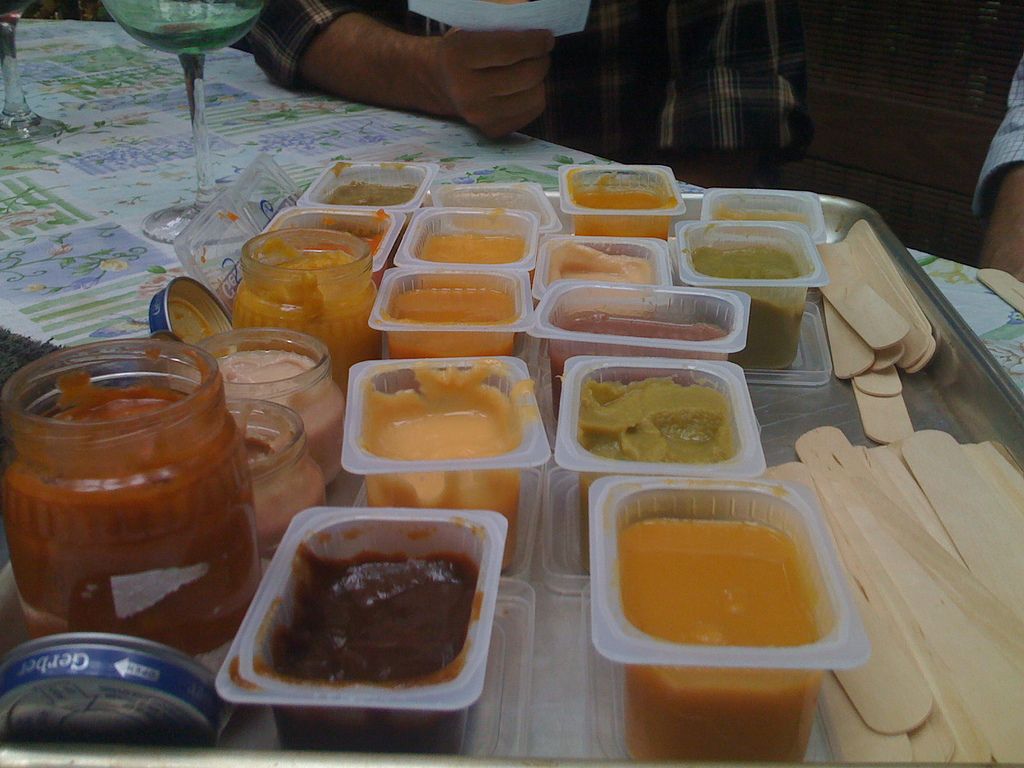 This makes it easier for parents to detect any allergies caused by the new ingredient.
This makes it easier for parents to detect any allergies caused by the new ingredient.
Toddler - includes more than two ingredients. Some of the products even introduce dairy products such as yogurt in the mix to introduce children to other dairy products apart from milk.
What are add-ons? Are they free?
Add-ons are superfood like flax seed, brown rice, oats, chia seeds which are all beneficial to health, adding an extra boost of nutrient to each pouch. Yes, each order is entitled to one add-on toppings, free of charge. Your serving of added superfood is on us.
Can I customise flavours?
Our menu is designed to deliver the maximum amount of nutrients with amazing flavours that your little one would go gaga over. Hence the service to customise is unfortunately not provided for now.
Do you offer discounts for bulk purchases?
Yes. The more you buy, the more you save, definitely. Do check out our Party Packs here.
Can I change the combination for Party Packs?
The flavours in each Party Packs are fixed, each offering a variant of flavours, nutrients and textures, making it easier for busy parents to make decisions.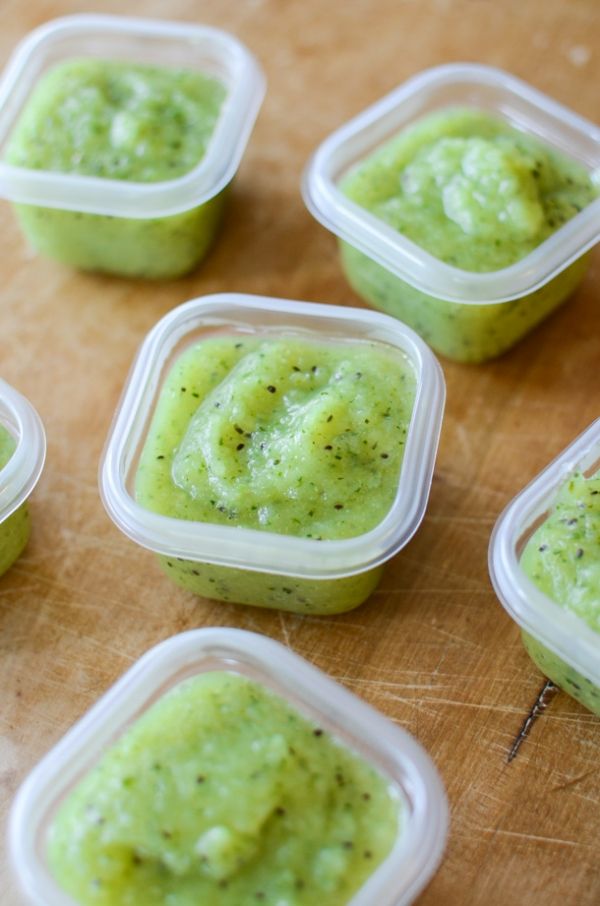
How long can I keep the pouches?
We recommend that all of our products should be consumed within 48 hours of purchasing (when kept in chiller at 0ºC - 4ºC). When frozen at -18ºC, they can last up to a month. Each product is made fresh every day to make sure freshness is guaranteed. To prevent the loss of nutrients, do consume immediately after opened.
Where are the food made?
All orders are made at SquEEEze Me Baby's main outlet in Petite Dapur, Bangsar in a clean, sanitary and transparent environment
Why does the product need to stay refrigerated / frozen?
Due to the lack of additives, preservatives and stabilizers, the food is perishable like any other fresh vegetables and fruits. It's necessary to keep the products refrigerated or frozen until feeding time!
My baby could not finish the entire pouch. Can I chill or freeze it back again?
Once purées are brought to room temperature, we do not recommend keeping them back in the fridge or freezer due to possible contamination. If you are unsure of how much your baby can eat, squeeze out a small portion to heat. Keep the rest of the purees chilled. Repeat process until baby is full! In no time, you will know your baby's appetite and how much to heat up.
If you are unsure of how much your baby can eat, squeeze out a small portion to heat. Keep the rest of the purees chilled. Repeat process until baby is full! In no time, you will know your baby's appetite and how much to heat up.
Baby food - Roskontrol
Useful articles
News (Gerber, Nan Optipro, Nestogen) - by 20-30%, cocoa and Nesquik drinks - by 20-25%. Also, ready-made breakfasts (Cini Minis, Fitness, Kosmostars) will increase in price by 20-30%, and Starbucks and Dolce Gusto brands by 30%. Unilever is also...
March 22, 2022
Detsky Mir freezes prices for three months
The largest Russian retailer of children's goods fixed prices for 90 items for three months, including baby food, baby hygiene products, feeding supplies, clothing and footwear, at the level of January 2022 . Previously, the FAS, on the basis of requests received from citizens, sent a request to the Detsky Mir group of companies to provide data on the reasonableness of price increases. And also warned that...
And also warned that...
February 16, 2022
Business predicts baby puree prices to rise due to labeling experiments
Manufacturers estimate that the introduction of a control system in the industry threatens a shortage and price increases of at least 10%. The business has therefore proposed to exclude baby puree made from meats, vegetables and fruits from the labeling experiment, which could begin as early as May 2022. From the letter that the Association of Manufacturers "Rusbrand" sent to the Ministry of Economic Development, it follows that for foreign products it was ...
January 26, 2022
Baby cereals will become 15.5% more expensive from February
The largest manufacturer of baby food, known under the brand name FrutoNyanya (JSC Progress), told retail chains that it had to raise prices from February 1 by an average of 15.5%. The reasons for this are more than known - rising prices for raw materials, logistics, packaging components, and, in principle, unfavorable weather conditions for crop production.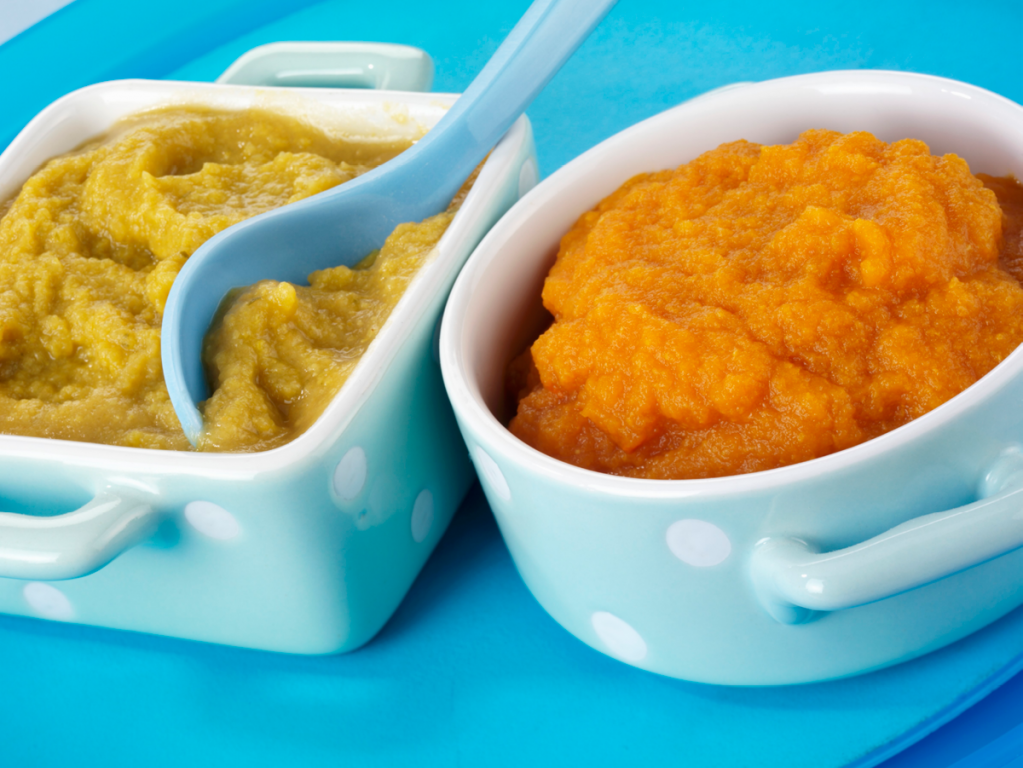 Company representatives so...
Company representatives so...
Goods with a quality mark
Black list
The ideal baby food up to 6 months is breast milk, but if it is not possible to feed the baby with mother's milk, then mixtures that are sold in stores come to the rescue. When choosing a ready-made mixture, follow the rule: the closer the mixture is to breast milk in composition, the better.
All formulas are thoroughly tested before entering the store, so they are all safe, which cannot be said about homemade food. But their price may differ, depending on how high-quality and modern the mixture is.
More modern formulas usually contain ingredients that have only recently been scientifically proven to be useful (eg, lutein). But this does not mean that traditional mixtures that do not contain this substance should be abandoned.
From 6-7 months, the baby begins to receive complementary foods, and by 8-9 months the proportion of mixtures in the child's diet is reduced to 50%, and the rest falls on fruit and vegetable puree, dairy-free cereals from ground cereals that do not contain gluten. At the second stage of complementary foods, meat puree can be introduced into the diet. It is not recommended to give juices to children under 1.5 years old.
At the second stage of complementary foods, meat puree can be introduced into the diet. It is not recommended to give juices to children under 1.5 years old.
Children under 1 year of age should not drink tea. It is better to boil baby water before drinking.
Starting from the age of 1, the baby can eat cottage cheese and other unsweetened fermented milk products. You need to be careful with yogurt: it may contain sugar, which is not recommended for children at this age. Kefir should be excluded from the diet of preschoolers, as it is highly acidic and may contain alcohol. Powdered milk for a baby can only be used as part of baking or in case of emergency.
Sugar and salt are generally recommended to be excluded from the baby's menu until at least 3 years old. Caution should be given to the child honey - it can cause allergies.
Do not allow children to eat foods intended for adults. Sausages and sausages are not baby food. They may contain phosphates, preservatives, and too much salt and sugar, which is harmful to the baby.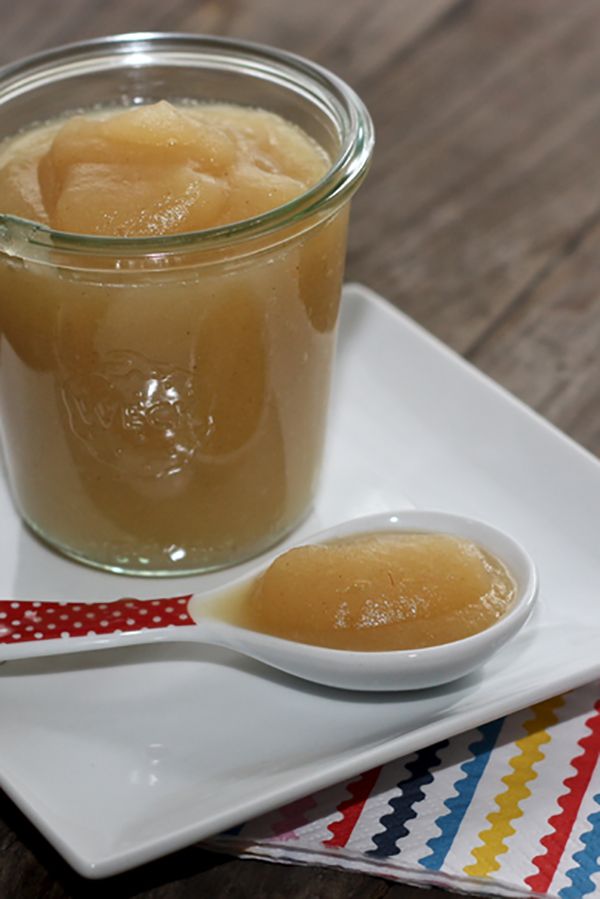
Name of applicant organization
Name of contact person
Position
Phone
E-mail
Name of the declared product (goods)
I have read and accept the Rules for the Functioning of the Independent Quality Control System "Roskontrol".
Product name
Product category
Brand
Barcode
Production information
0008
×
Tariff
You have selected subscription level Free .
The subscription price is now 0.00₽ .
Subscriber Registration Already have an account? Login here
Username
Password
Name
Surname
Full Name LEAVE IT BLANK
Processing...
Baby food at home: recipes, videos
The growing up of a little person is a delightful process that cannot but please the parents of the crumbs. However, the first feeling that mom and dad face when it comes time to introduce complementary foods into a child's diet is confusion.
However, the first feeling that mom and dad face when it comes time to introduce complementary foods into a child's diet is confusion.
Which food is the most healthy, hypoallergenic and delicious? Most often, the first "real" meal of the crumbs after mother's milk and formula is vegetable or fruit puree. The choice of baby food on store shelves is very wide - each manufacturer tries to convince the buyer that jars with beautiful labels contain only natural products, there are no dyes, sweeteners and other harmful additives. A variety of "meals" for babies in factory packaging marked "3+ months." does not guarantee the true usefulness of the product that is inside. Every mother understands that complementary foods prepared on her own, from natural products, are much better for her child.
Another advantage of making your own baby food is that you can choose the best products, wash fruits, berries or vegetables thoroughly, peel them well and remove damaged parts.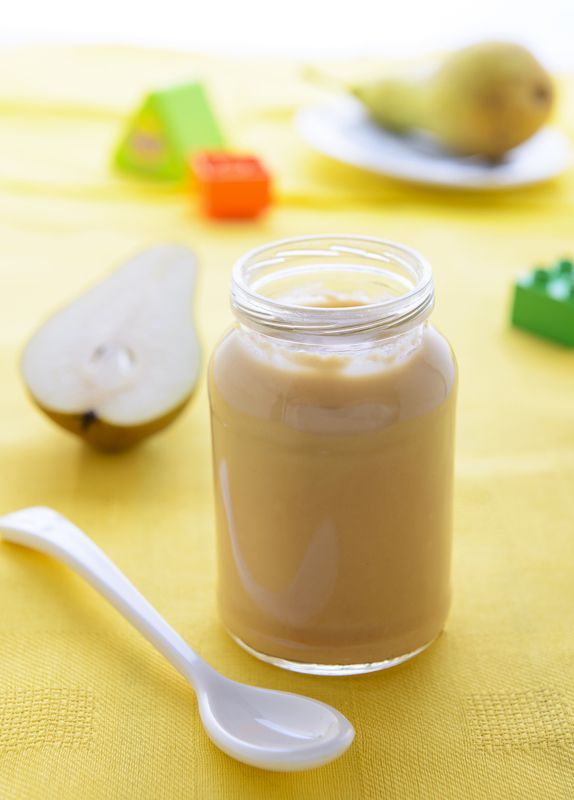 In addition, the parents of the crumbs themselves can choose the way - how best to cook baby food: food can not only be boiled, but also baked in the oven or cooked in a double boiler.
In addition, the parents of the crumbs themselves can choose the way - how best to cook baby food: food can not only be boiled, but also baked in the oven or cooked in a double boiler.
It is also important that homemade baby puree is much tastier, it will undoubtedly be useful for a growing body and will not cause allergies! Even the simplest children's dish, prepared by mom, keeps the warmth of caring hands and cannot be compared with expensive dishes from the store.
What should be the correct complementary foods for children? Of course, you should start with one ingredient (such purees are called one-component purees), then move on to more complex options. Experts emphasize that the most suitable product for the first "dish" is zucchini. Cauliflower can also be considered neutral. Gradually it will be possible to introduce carrots, pumpkins, potatoes, broccoli and green peas. At the first stage of the introduction of complementary foods, it is better to give preference to vegetable purees and switch to fruit purees when the child already treats “serious” food well.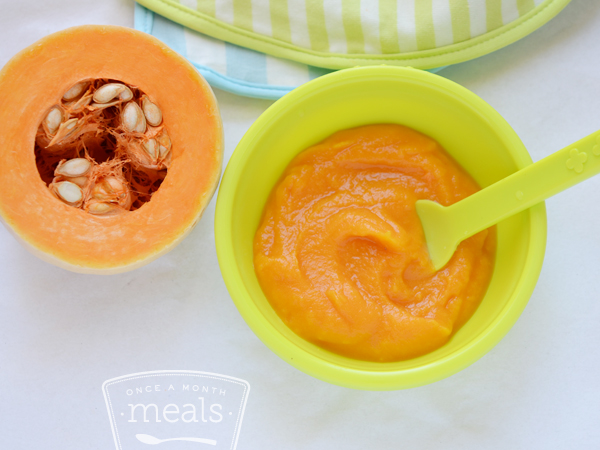
The basic rules and principles of preparing high-quality baby food yourself:
- it is best to take fresh products for preparations: fruits from the tree, berries from the bush and vegetables from the garden are much healthier than those that have already been in the refrigerator for a week. If there are no seasonal vegetables at the time of preparation, the use of frozen foods is acceptable, but in this case, try to give preference to whole fruits - they retain the greatest amount of nutrients;
- only filtered water should be used for cooking vegetables;
- the preparation of baby food requires, if not separate dishes, then thoroughly washed. Do not, for example, cut vegetables on a meat board. If there is a dog or cat in the house, then you need to restrict her access to the kitchen when food is being prepared;
- It is not recommended to use vegetables and fruits in the diet of infants, in which the content of chemical additives is consistently high.
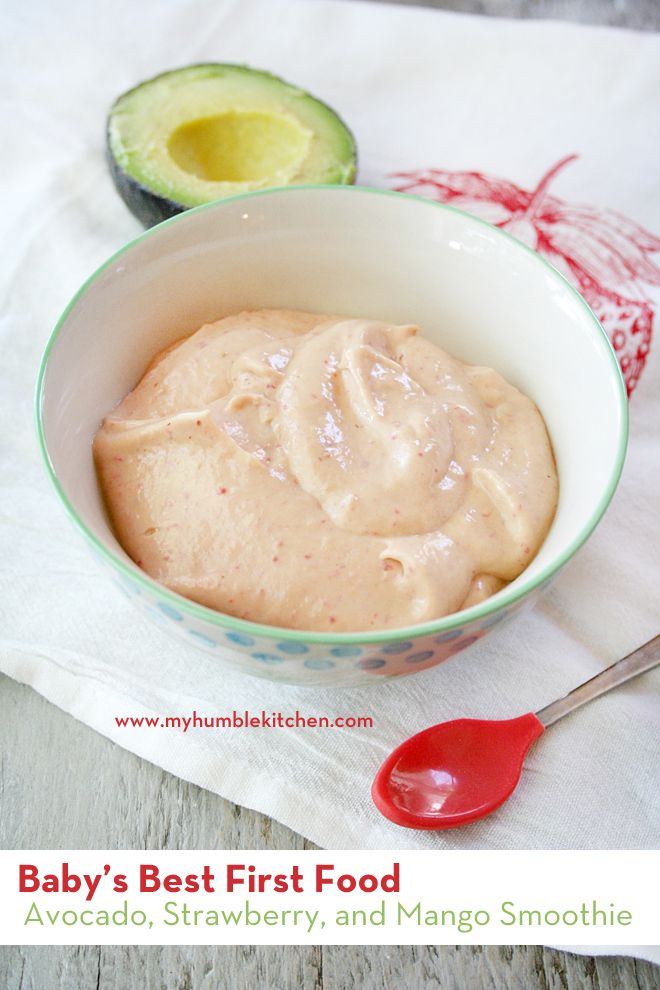 These often include watermelons and melons, beets, spinach and lettuce;
These often include watermelons and melons, beets, spinach and lettuce; - it is better to soak vegetables purchased on the market with water before cooking: put carrots, potatoes, zucchini and cauliflower in filtered water for a couple of hours - this will remove nitrates;
- do not leave excess mashed potatoes for the next meal: the child should be given only freshly prepared food, and "yesterday's" mashed potatoes are best eaten by adults or given to pets;
- you can choose cream, boiled egg yolk, grated cheese or finely chopped dill as an additive to puree - this will diversify dishes for children from 8 months;
- try it! Children's food can and should be enjoyed by an adult.
There is another question that often worries parents: is it permissible to preserve baby puree and how to do it correctly? After all, such complementary foods for the developing body of a small child must be prepared daily for one or even two or three years: until the baby is ready to eat adult food from the common table.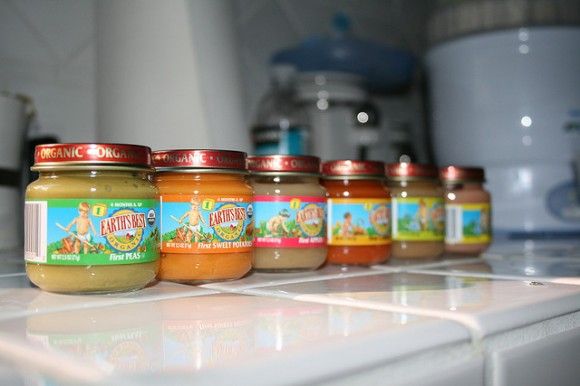 Not every mother has the time and opportunity to prepare baby puree daily, but you don’t want to buy food for the baby in the store. In addition, it is obvious that in the winter-spring period it is almost impossible to find fruits and vegetables grown without the addition of chemicals. The answer to the question is quite simple: the requirements for the conditions for preparing baby food are very strict (keeping the temperature, sterilizing jars, etc.), but using an autoclave solves all problems: all that is required is to load jars with blanks into the autoclave for 20 minutes and set temperature 120 degrees. After cooling, it is better to store baby food in a dark, cool place for about 12 months, daily delighting the child with homemade homemade food.
Not every mother has the time and opportunity to prepare baby puree daily, but you don’t want to buy food for the baby in the store. In addition, it is obvious that in the winter-spring period it is almost impossible to find fruits and vegetables grown without the addition of chemicals. The answer to the question is quite simple: the requirements for the conditions for preparing baby food are very strict (keeping the temperature, sterilizing jars, etc.), but using an autoclave solves all problems: all that is required is to load jars with blanks into the autoclave for 20 minutes and set temperature 120 degrees. After cooling, it is better to store baby food in a dark, cool place for about 12 months, daily delighting the child with homemade homemade food.
Pumpkin puree: tender and fragrant
Pumpkin is a tasty vegetable that is good for babies. This fruit has a beneficial effect on digestion, is well absorbed by the child's body and is rich in various vitamins: A, C, B, B2, E, PP, T. In addition, the carotene content in pumpkin is 5 times higher than in carrots!
In addition, the carotene content in pumpkin is 5 times higher than in carrots!
Baby pumpkin puree has a sweet taste, so the kids eat this dish with great pleasure. For preparations, it is better to buy small whole pumpkins, as they usually taste better than large ones and are easier to peel.
- Rinse pumpkin well under running water, peel, cut in half, remove seeds.
- Then you need to cut the fruit into small cubes, put in a saucepan and cover with water. Cooking time after boiling - 20 minutes. You can also steam pumpkin: it will retain more nutrients with the same cooking time.
- The next step is to beat the cooked pumpkin with a blender until the consistency of a gentle puree. If the dish turned out to be thick, add water or milk (milk mixture).
- Vegetable oil and salt are added to pumpkin puree to taste, but these additives should be used with caution: only if they are acceptable for the age of the child.
For babies older than 8 months, pumpkin puree is supplemented with other fruits and vegetables, and also added to porridge.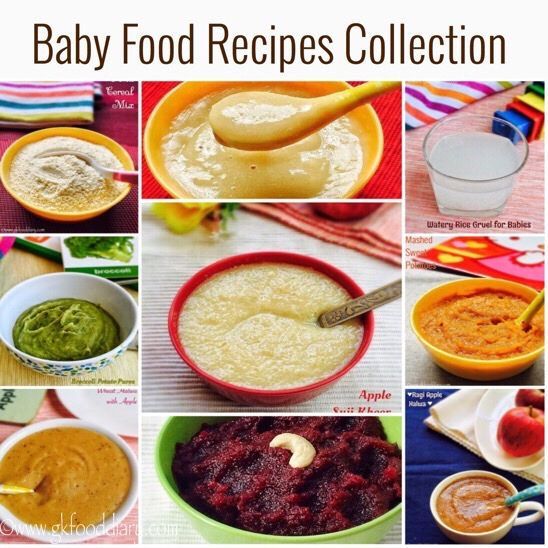
Broccoli puree: simplicity and elegance
Broccoli is not just cabbage, but a storehouse of vitamins and microelements! Beautiful on the outside and fantastic on the inside - the high content of protein and vitamin C (there is more in broccoli than in citrus!) deserves special attention. There are many articles on the Internet about the benefits of broccoli, and preparing this product is not at all difficult.
To prepare this type of cabbage for baby food, you need to choose the highest quality product: the inflorescences must be unopened, green, moderately elastic.
- Broccoli should be washed, cut into pieces and boiled. Steaming will take 20 minutes, in water - faster: fresh cabbage should be boiled for a little more than 5 minutes, and frozen - at least 10. When cooking, do not pour a lot of water, it should only cover the vegetables a little.
- When the cabbage is cooked, take it out, transfer it to a blender bowl and grind to a puree state, add a little warm boiled water.
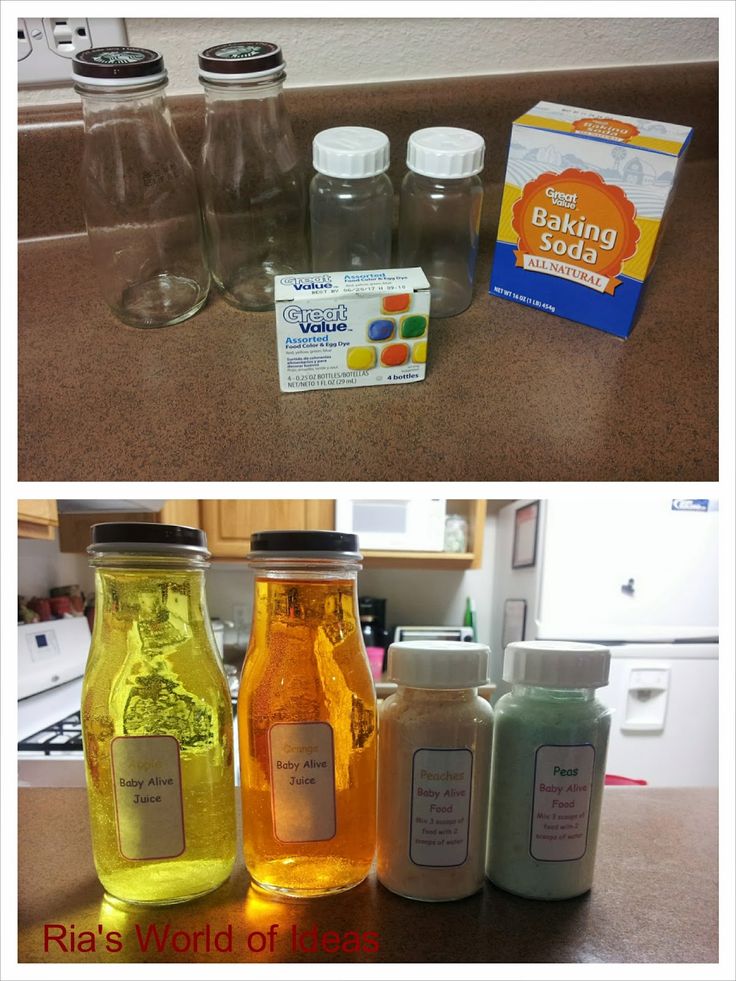
- Add salt and butter to taste.
Pear puree: a fragrant dessert
It's no secret that babies love fruit puree - almost all children like sweet dishes. The pear is a suitable option for the first one-component fruit food - a sweet fragrant fruit that has a high concentration of vitamins, stimulates digestion and almost never causes allergies.
If you want to cook a safe puree for your child at home, then it is best to choose green pears, these are the fruits that are considered to be the least allergenic.
- Fruit must be peeled, core removed with seeds, cut into cubes.
- Transfer the pear to a heavy-bottomed enamel saucepan, add a little water and simmer for 15-20 minutes over low heat.
- Then transfer to a blender bowl and puree until smooth. If the puree is too thick, add a little warm boiled water.
- You can dilute the dish with milk or formula - it depends on the taste preferences of the baby.
The same recipe is used for applesauce.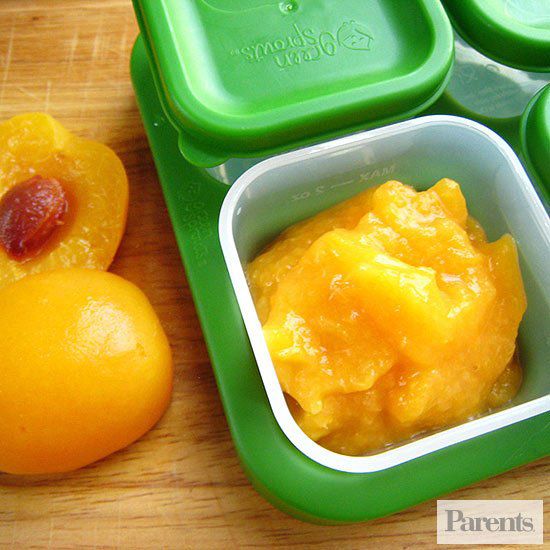 In the future, try to combine these two fruits in one dish.
In the future, try to combine these two fruits in one dish.
Classic apple-zucchini puree
A good appetite of a baby pleases every mother, but little gourmets are often capricious, and it is not easy to please them. Zucchini and apple puree is a classic combination of products that will diversify the baby's menu already in the fifth or sixth month of life.
This complementary food contains only hypoallergenic products, has a positive effect on the functioning of the heart, and stimulates the strengthening of the immune system.
- Selected products should be thoroughly washed, peeled, core removed from apples.
- Cut zucchini and apples into cubes, put fruits in a cooking pot first - they should cook for 5 minutes longer, and then vegetables. The total cooking time is 20 minutes.
- When the food becomes soft, it is necessary to grind it to a puree state using a blender.
- To taste - dilute with water, add salt, oil.
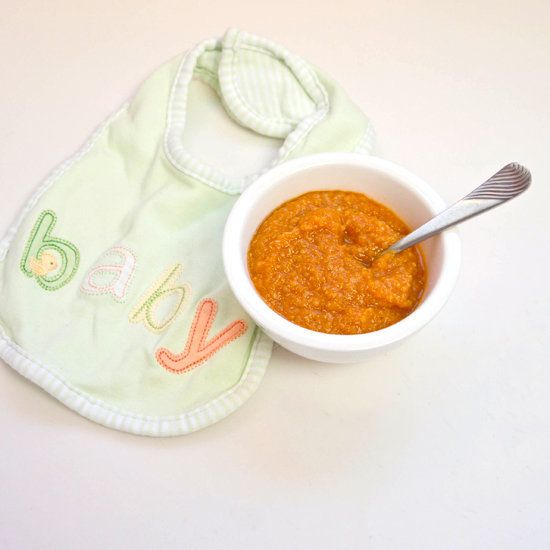
This puree can be considered an independent dish for the little ones or become a delicious side dish for older kids.
Colorful carrot-potato puree
For many parents, carrots and potatoes are the easiest and most understandable type of complementary food for the baby. However, if you cook and serve standard products a little differently than usual, you can improve the traditional taste of a classic dish.
For baby puree, young potatoes should not be chosen - they contain a lot of starch. Carrots, on the contrary, it is better to buy young ones.
- Wash and peel the vegetables thoroughly and cut into cubes.
- It is better to steam the mashed potatoes and carrots, the vegetables should be boiled separately. Cook until tender, 20 minutes on average.
- Separately puree the vegetables in a blender, thinning with lukewarm water if needed.
Both types of puree are beautifully placed on a plate without mixing: the child can decide for himself whether to mix food or eat separately.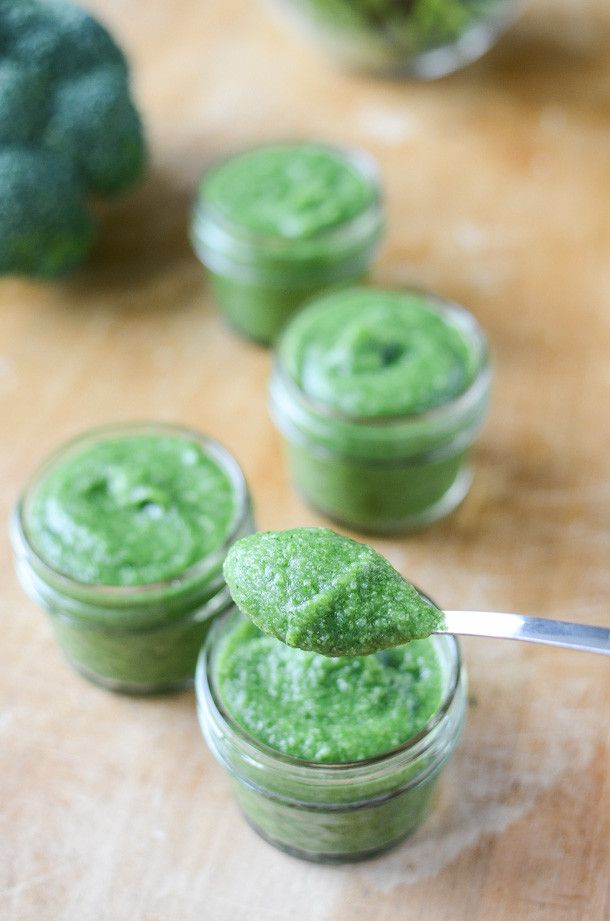
Exotic variety: mango puree
Tropical fruits should not be offered to a small child before the age of 7-8 months and only if there was no allergy to other foods.
Mango is an aromatic fruit with an original pleasant taste. This fruit helps to overcome colds, reduce inflammation in the body, improve sleep and normalize the functioning of the stomach.
To feed the baby, ripened fruits should be selected - quite soft, yellow-red in color.
- Fruit should be peeled and pitted, cut into cubes.
- Put the raw mango into a blender, puree, transfer to a heavy-bottomed pot and boil for a few minutes.
Older children may be offered uncooked mango puree. This fruit is completely independent - no need to add sugar or water!
Sweet pumpkin puree with apple
This puree is called sweet, since both pumpkin and apples are foods with sufficient sugar content. Such a dish is well suited as a dessert for children who already eat “serious” food well - vegetable purees and cereals.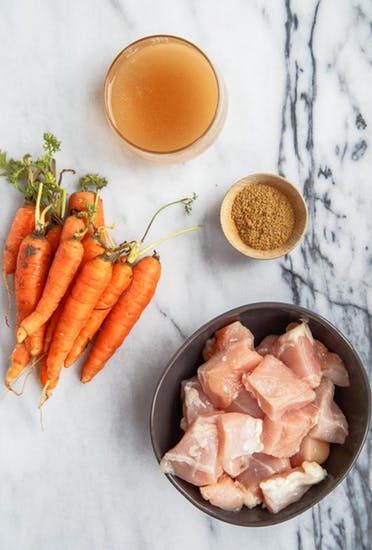
In addition, such complementary foods are a great option for the autumn-winter period: seasonal products contain enough choline, a lot of fiber, natural proteins and vitamins (groups A, B, C, E, etc.), zinc, sodium, calcium and only!
- Pumpkins and apples must be peeled, peeled and seeds removed, cut into cubes and sent to a double boiler.
- Cook for about 20 minutes until the food is soft. Then place them in a blender bowl, add raisins and chop. If the child chews well, mash everything with a fork, and leave the raisins whole.
Hearty puree with celery and turkey
For older kids, meat is added to vegetable dishes - turkey fillet is an excellent option for developing a child's taste preferences. Appetizing and fragrant meat puree includes only three ingredients: celery root, turkey fillet, butter.
The proportion of meat and celery should be approximately 10:1, the amount of butter to your taste.
- The turkey fillet must be boiled in the "second stock" for about 20 minutes after boiling.
